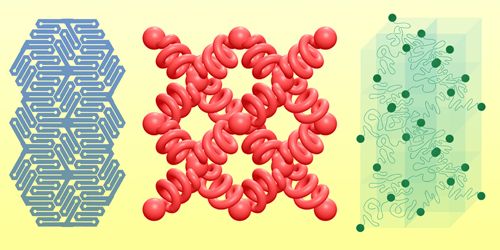Fracture Energy of Soft Lattices
What determines the minimum energy needed for a crack to propagate through a lattice? An answer that seems intuitively correct comes from a century-old theoretical model originally developed to describe brittle fracture in crystals but since updated to cover polymers: The energy required to fracture a latticed material depends on the energy needed to break an individual link. But advances in measurement techniques coupled with new materials and fabrication methods have led physicists to realize in recent years that this relationship fails for networks whose links can stretch. Using simulations backed up by experiments on custom-made lattices, Chase Hartquist and Shu Wang at MIT and their collaborators have derived a new general model that predicts the fracture energy for a range of materials from fishing nets to networks of microscopic polymers [1].
The researchers simulated 2D and 3D lattices under uniaxial tension. They induced these lattices to fail along a specific line or plane by cutting a notch at one edge. As the lattice was pulled apart, a rupture propagated from this notch, one broken link at a time. From one simulation to another, they varied the lattice topology and spacing, the force and stretching length at which each link failed, and the linearity or nonlinearity of the links’ stress–strain relationship. The MIT team found that the fracture energy of all its simulated and physical lattices—from a network of nanoscopic polymers to a macroscopic mesh—fitted a scaling law that was governed by three quantities: the type of lattice structure, the breaking force of each link, and the stretched length of the link at failure. Hartquist says that their law could be used to create more dependable tires and more durable fabrics.
–Marric Stephens
Marric Stephens is a Corresponding Editor for Physics Magazine based in Bristol, UK.
References
- C. Hartquist et al., “Scaling law for intrinsic fracture energy of diverse stretchable networks,” Phys. Rev. X 15, 011002 (2025).




